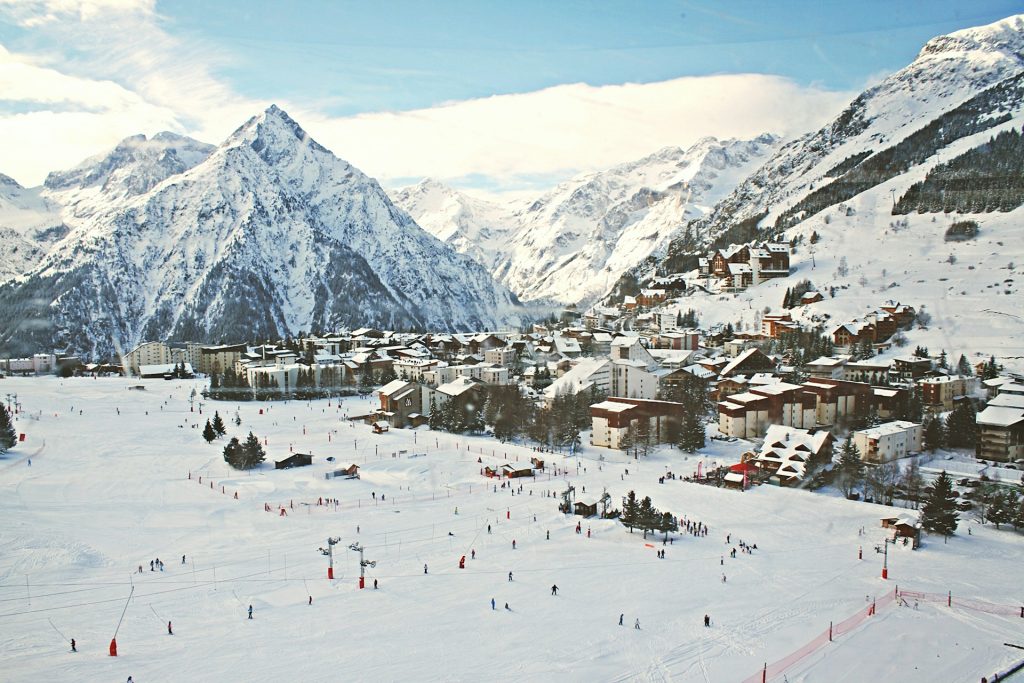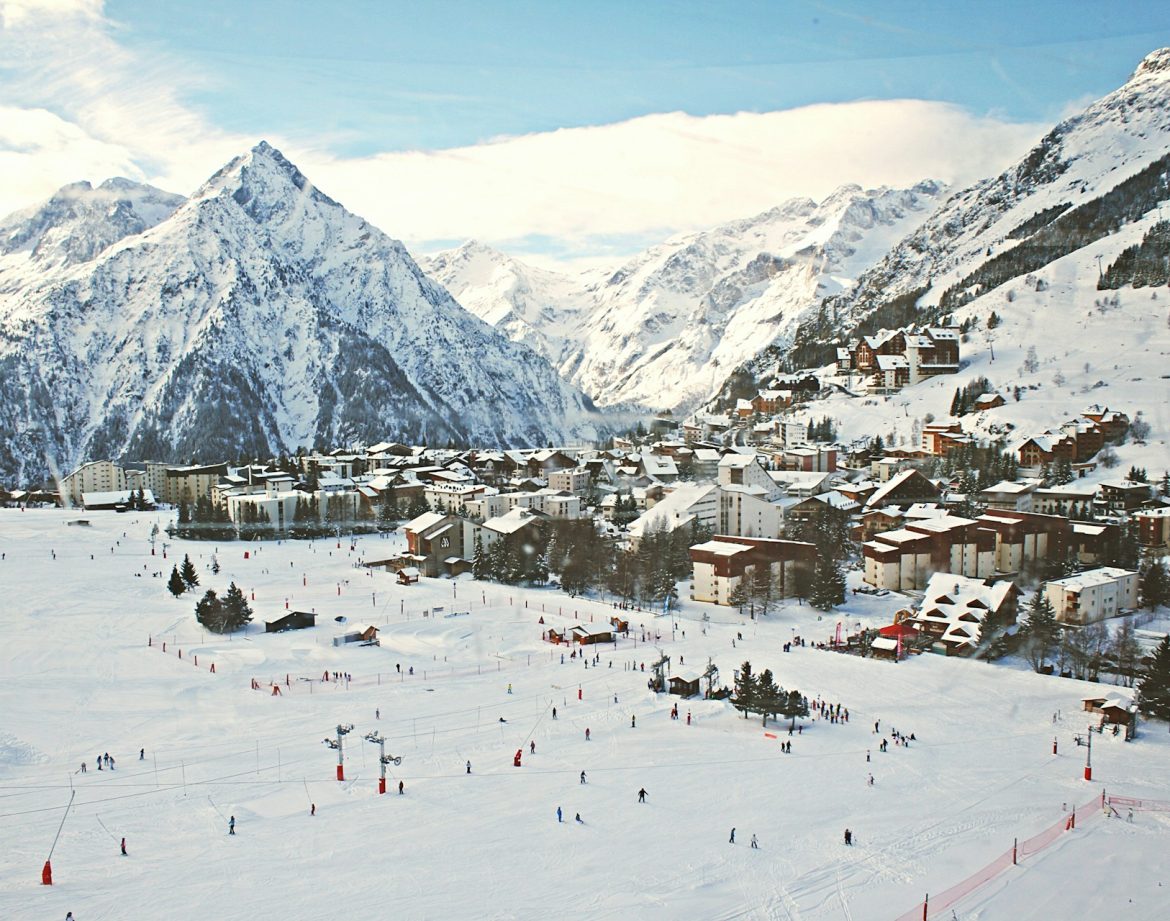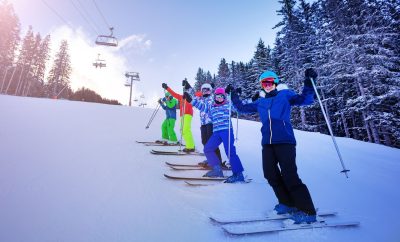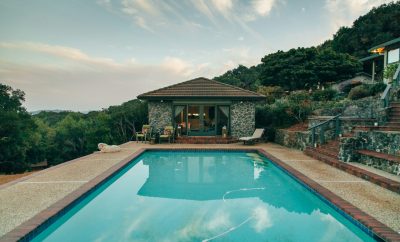How to Choose a Ski Resort for Buying a Property
Buying a property in a ski resort is a great investment – both when it comes to lifestyle and finances. Ski properties are wonderful for personal enjoyment, but in many cases, they are a significant financial investment that could yield rental income and potential long-term appreciation.

Yet, when considering a purchase of ski resort real estate, prospective buyers face a number of choices. Selecting the right ski resort for property investment means that you need to carefully assess several factors to ensure the investment aligns with your personal preferences, financial goals, and lifestyle aspirations.
Accessibility and location are paramount factors, the character of the resort, the amenities available and the level of infrastructure – all these factors play an important role in deciding which ski resort to choose for your ski property investment.
Defining Your Goals and Preferences
Whether it’s for a vacation home, an investment property, or a retirement haven, buyers should define clear objectives when considering the purchase of ski property.
Some buyers look for a vacation home where they can create lifelong memories with family and friends. Others may view the purchase as real estate investing, seeking properties that will appreciate or bring in rental income. There are also people for whom a ski property is a personal retreat to enjoy the slopes and mountain atmosphere.
While a ski chalet or apartment can offer both pleasure and financial benefits, your goals should guide the selection process:
- If looking for a vacation retreat, qualities like resort amenities and proximity to ski facilities matter. Ensure the resort matches the lifestyle and recreational needs.
- For those seeking an investment property, factors such as local real estate trends and rental market demand are crucial. Consider the market’s stability and growth for asset appreciation.
- As for future retirees, the choice may hinge on the community’s qualities, ease of access, and healthcare availability. Look for ease of living, access to services, and a supportive community.
Ultimately, choosing the right ski resort for property buying depends on whether the resort’s offerings align with the buyer’s specific goals and preferences.
Location Comes First
When investing in a ski property, the importance of location cannot be overstated. It determines the property’s accessibility, appeal, and potential for rental income.
Selecting the location within a ski resort
Firstly, buyers should prioritize proximity to ski lifts. It’s good to know that properties closer to lifts enjoy higher demand.
Views are a substantial selling point, with properties offering mountain panoramas being more desirable. Year-round accessibility is critical, especially regarding roads that must stay open in heavy snow.
Consideration should also be given to the size of the ski area, with larger areas attracting more visitors. Distance to the nearest airport is another factor that can significantly influence rental prospects and resale value.
Popular ski resorts
Each location carries a unique mix of benefits and drawbacks, directly influencing investment potential:
- Ski resorts in the French Alps, like Meribel and Val d’Isere, offer vast ski areas and are well-linked, but property prices are at the higher end.
- Resorts in the Swiss Alps, such as Verbier and Zermatt, provide exclusivity and breathtaking views, but they may have more restrictive purchase regulations.
- Lesser-known resorts often present more affordable investments but might lack comprehensive amenities.
- Accessibility varies widely. Some resorts are just an hour away from major airports, while others may require longer travel times, which impacts their attractiveness for short-stay tourists.
Resort Popularity and Infrastructure

The popularity of the resort among tourists and locals, as well as its infrastructure, are crucial factors you need to consider.
Ski resorts that have high traffic from both tourists and locals tend to provide a vibrant atmosphere and a stable market for property investment.
The number of tourists can be indicative of the resort’s appeal and the range of activities available, from ski slopes to après ski entertainment. Likewise, a strong local presence suggests a year-round community, which can be especially attractive for buyers seeking a home-like environment.
When it comes to the infrastructure of a ski resort, it extends far beyond the quality of its ski lifts and slopes.
As a prospective buyer, you should look into:
- Transportation: Accessibility to the nearest town or city by public and private transport.
- Lift systems: The capacity and modernity of ski lifts influences wait times and slope accessibility.
- Slope Maintenance: Regular grooming and snowmaking abilities ensure good skiing conditions throughout the season.
- Facilities: Presence of essential facilities like medical services, ski schools, and equipment rentals.
- Accommodations and amenities: A variety of lodging options and amenities contribute to the overall experience and convenience for property owners and their guests.
Property Market Trends
When considering the purchase of property in a ski resort area, potential buyers should pay close attention to current market trends. This includes the average property prices and factors that influence them, as well as any economic or development plans that could affect the market in the future.
Property prices
Property prices in ski resorts have a tendency to fluctuate based on a variety of factors, including location and demand. For instance, the Alpine property market has seen a tight supply with listings down 56%, which results in a rise in prime property prices.
Meanwhile, the median home price can vary significantly between resorts, often depending on the resort’s country, amenities, and prestige.
What affects property values?
Several variables can impact real estate values in ski resort areas:
- Economic conditions: A stable or thriving economy can increase buyer confidence, potentially driving up property prices.
- Development plans: Investments in the resort’s infrastructure, like new ski lifts or updated facilities, can make a resort more attractive to buyers and can lead to a rise in property values.
- Supply and demand: Limited availability of properties can lead to higher prices, especially in popular or exclusive resorts.
Finding emerging markets with potential for growth
To discover emerging markets that may offer room for growth, buyers should look at these indicators:
- Early information on planned upgrades to infrastructure or amenities can signal a strengthening market.
- Indicators of a strong local economy suggest a market ripe for investment.
- An increase in tourism or popularity can mean that a resort area is likely to experience a property value increase.
Rental Potential
Rental potential is one of the key factors when considering the purchase of a ski resort property. It includes the ability to generate income, understand seasonal fluctuations, and adhere to legal regulations.
The potential for generating rental income is the highest during the peak skiing season. Investors should evaluate the demand for rentals in the area, ensuring that their property can attract tenants. Proximity to ski lifts, amenities, and the charm of the locale are crucial in influencing rental potential.
Maximizing seasonal rental income
Seasonal rental income can vary significantly, with winter months usually being the most lucrative. Property owners can maximize their earnings by:
- Listing their property at competitive rates during the ski season.
- Offering off-season discounts or marketing to different types of visitors, like hikers or mountain bikers.
Legal and regulatory considerations
Legal requirements for rental property owners must not be overlooked. This includes obtaining necessary permits, adhering to safety regulations, and understanding tax implications. In some regions, there may be restrictions on the number of days a property can be rented out, which must be factored into income projections.
Property owners need to be aware of these regulations to avoid penalization and ensure a lawful operation of their rental business.
Community and Lifestyle

Choosing a ski resort for buying property is as much about the community and lifestyle as it is about the slopes. Potential buyers should consider if the resort offers a family-friendly atmosphere, luxury experiences, nightlife, and year-round activities like mountain biking, hiking, and cultural events.
The importance of the community
The community vibe of a ski resort can greatly influence a buyer’s satisfaction with their property. Resorts with a strong sense of community often have organized social events, a welcoming atmosphere, and are places where neighbors know each other. For those looking at family-friendly options, it’s vital to check for activities and facilities suitable for all ages.
Lifestyle amenities
Lifestyle amenities are crucial for comfort and relaxation after a day on the slopes. Luxury buyers in particular should look for high-end spas, state-of-the-art gyms, and exclusive social clubs. Such amenities provide a complete experience, which increases the appeal of the property and caters to a luxury or nightlife-oriented lifestyle.
Year-round activities
A resort that offers a variety of year-round activities elevates the attractiveness of a property. The ideal resort isn’t just a winter destination. Rather, it has mountain biking trails, hiking paths, and organizes regular cultural events. This ensures that the resort remains lively and engaging throughout all seasons.
Climate and Environment
The climate and environmental factors affect both the viability of ski seasons and the resort’s ecological footprint. These aspects impact the enjoyment and accessibility of winter sports but also the long-term value and sustainability of the property.
Weather patterns
The typical weather patterns of a ski resort can dictate the quality and duration of ski conditions. For instance, resorts at higher altitudes tend to have longer ski seasons due to colder temperatures, which is an important factor for those looking to maximize their time on the slopes.
You should also consider the reliability of snowfall. Naturally, areas prone to consistent, heavy snow are preferable. On the other hand, resorts that offer a blend of natural and artificial snow can ensure a more predictable skiing experience.
Climate change is altering weather patterns and shortening ski seasons. Ski property investors need to be aware of how these changes might affect certain locations.
Resorts that are taking steps to mitigate the impact of climate change (e.g. by investing in efficient snow-making equipment or campaigning for reduced carbon emissions) are more likely to sustain their operations and attract environmentally conscious buyers.
Sustainability and eco-friendliness
A growing number of ski resorts are adopting sustainable practices to reduce their environmental impact. Prospective property buyers should look for resorts that utilize renewable energy sources, waste reduction programs, and eco-friendly construction methods.
Properties within these resorts not only offer the chance to engage in winter sports with a lighter ecological footprint but may also ensure better resale value as demand for sustainable living grows.
Financial and Legal Considerations
When entering the market for ski properties, potential investors should be well-informed about the financial and legal nuances associated with such a purchase.
Financial aspects
Investing in ski property involves several financial factors:
- Taxes: Annual property taxes can vary greatly by location. Additionally, some regions impose higher taxes on second homes or investment properties.
- Fees: Homeowner association fees are common in ski resort areas, covering amenities and maintenance of shared spaces.
- Mortgage options: Financing a ski property may offer different terms compared to standard residential mortgages, with rates influenced by the property’s location and intended use.
- Additional purchasing costs: Closing costs, transfer fees, and inspection expenses can add up. You may also need to budget for furnishings and property upgrades.
Legal issues
Investors should conduct thorough research and consult with legal and real estate professionals to navigate these complexities confidently:
- Zoning laws: These dictate how a property can be used. For ski properties, zoning will influence rental possibilities and property expansion.
- Restrictions: Many resorts have specific covenants, conditions, and restrictions (CC&Rs) that govern property use.
- Foreign ownership: Non-residents should investigate any regulations or limitations on foreign property ownership, which can vary significantly by country.
Future Developments

When considering real estate investments at ski resorts, future developments are essential for forecasting property values and investment returns.
Property values in ski resorts are significantly influenced by new infrastructure and amenities, much like the impact of high-quality chalets and ski-in/ski-out access. For instance, they might surge if plans reveal the creation of new ski lifts, expansions of the slopes, or upgrades to the existing facilities.
Potential investors should actively seek out information on any upcoming projects within a ski resort area to gauge how this could tick property values upwards.
Moreover, we recommend that investors conduct in-depth research on planned investments to appreciate their potential impact on property values. This includes:
- Official resort plans: Outlining proposed developments in the ski area which may affect demand for properties.
- Local government publications: These may detail infrastructure investments that bolster the area’s appeal.
- Historical data: Assessing how past investments have affected real estate values can be predictive of future trends.
Investigating these facets allows investors to gauge the desirability and future worth of properties, building a solid foundation for investment decisions.
Final Thoughts
When considering a property purchase in a ski resort, potential buyers should prioritize location, as it greatly influences both the value and desirability of the property. Those looking for a wise investment should consult real estate professionals familiar with ski properties to navigate the transactions effectively.
Moreover, buyers must evaluate property features like proximity to ski lifts, local amenities, as well as the balance between activities and landscapes. Careful consideration of the financial aspects, maintenance costs, and the possibility of generating a passive income, is also important.
A combination of well-informed decisions, supported by expert advice, and a strategic approach to location and features, is paramount for those seeking to invest in ski resort real estate.
If you have been considering the Swiss Alps as the area for your ski property, seek no further than Verbier. One of the properties on our website may be just what you’re looking for.




